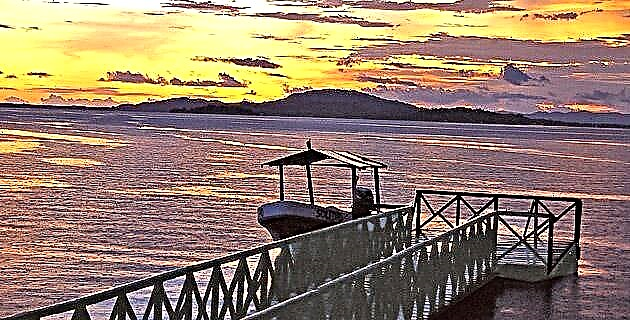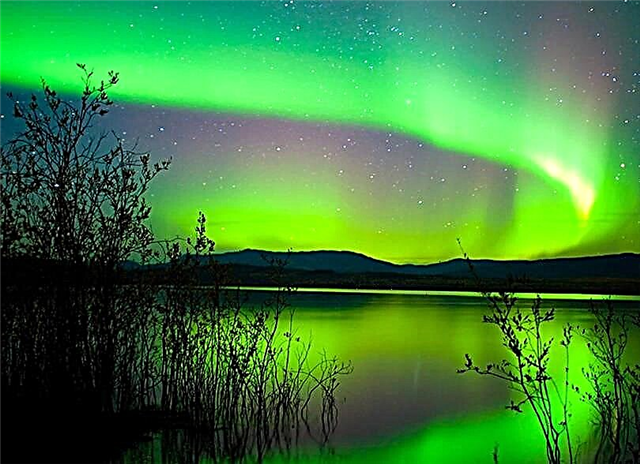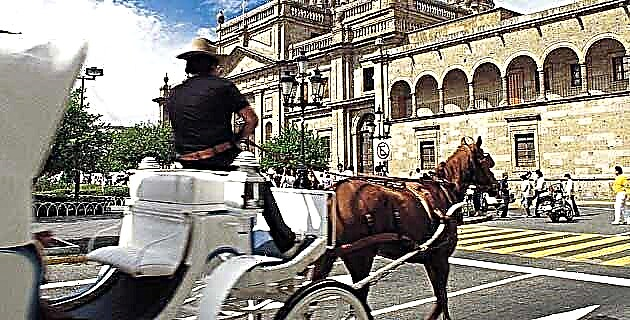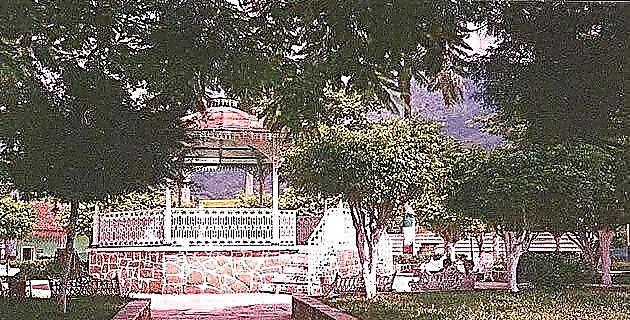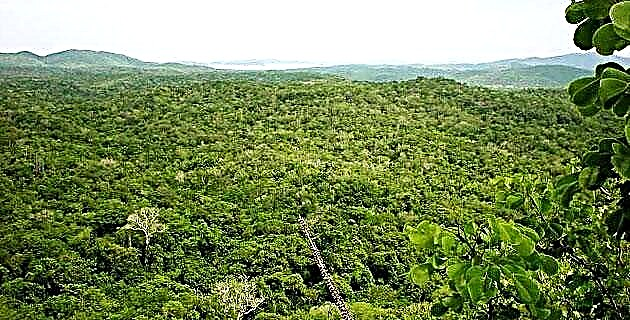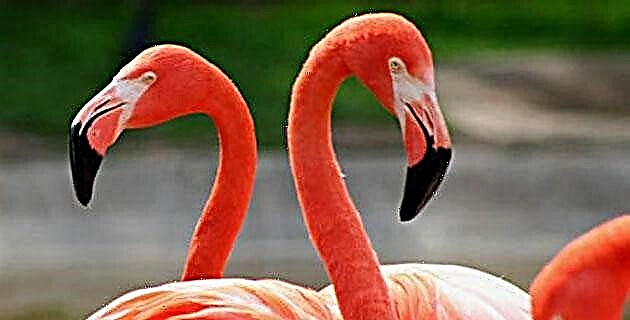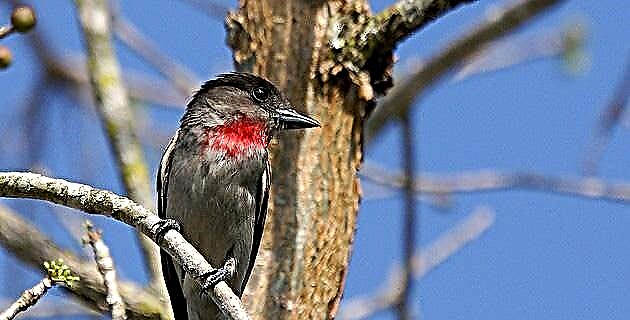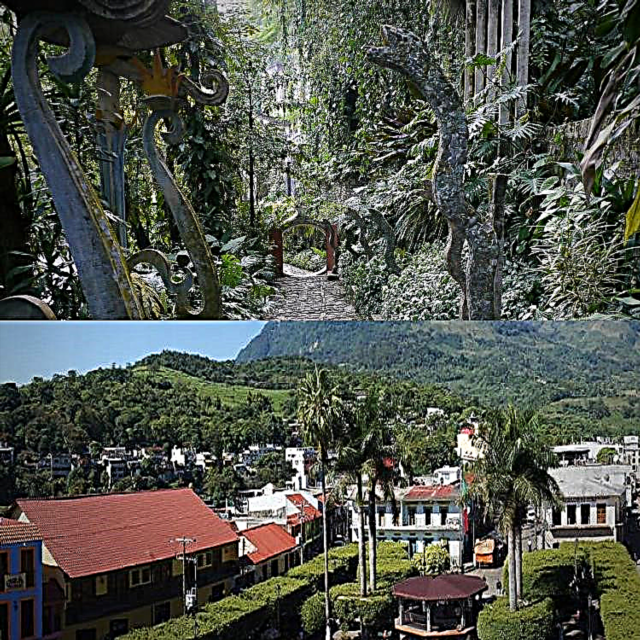To speak of the Huasteca Potosina is to immerse yourself in beautiful and immense natural landscapes, splendidly cultivated fields, beautiful currents and waterfalls, excellent culinary art and beautiful musical, scenic and artistic manifestations. We present you the Complete Guide to the Huasteca Potosina.
1. What is the Huasteca?
La Huasteca is a Mexican border region with the Atlantic Ocean, which goes into the interior of Mexico, covering part of the states of Veracruz, Hidalgo, Tamaulipas and San Luis Potosí, and to a lesser extent, Puebla and Querétaro. Therefore, it is often spoken of the Huasteca Veracruzana, Tamaulipeca, Hidalguense, Poblana, Queretana and Potosina.
It was a territory populated by several pre-Columbian civilizations, the most important being the Maya and the Huasteca, which are closely linked.
2. What are the main features of the Huasteca Culture?
The Huasteco people continue to live today in the region conquered by their ancestors, conserving some of their ancestral cultural features.
The Huasteco language, also called Teenek, is a language of Mayan origin and is the only one that has survived among the members of its linguistic family.
The Huastecos were brilliant potters from the beginning, knowledge that was transmitted from generation to generation.
Other preserved cultural manifestations are the huasteco huapango and some peculiarities of the clothing.
3. What are the Huastecos like?
The Huastecos are recognized as an ethnic group, regardless of the Mexican state in which they live.
Indigenous people are not easy to register, but it is estimated that there are more than 200,000 Huastecos living in their ancestral territory. They are dark, short, very strong and healthy, with straight, black hair.
4. What do they live on?
Since time immemorial, the Huastecos have lived from agriculture and the breeding of domestic animals.
They grow corn and other grasses, coffee, beans, peanuts, avocados, bananas and sugar cane, among the most important items.
They are also lumberjacks, selling the logs to sawmills. Huasteca women are extraordinary potters and very skilled at embroidery.
5. What is typical Huasteca music?
The huapangos or huastecos sones have transcended the Huasteca Region to become a musical manifestation of national presence in Mexico.
The huapangos are not as old as the Huasteca civilization, since they emerged during the 19th century, but they constitute a rhythm that has Spanish, African and indigenous characteristics.
In the video below you can hear a huapango:
The Huasteco trio carries huapanguera guitar, huasteca jarana and violin, with footwork and improvisation rounding out the magnificent musical and artistic production.
In the video below you can hear a trio:
6. What is the Huasteca Potosina?
The Huasteca Potosina is made up of 20 municipalities with territories belonging to the ancient Huasteca civilization in the current state of San Luis Potosí.
Among these municipalities, due to their tourist or historical relevance, it is worth mentioning those of Ciudad Valles, Xilitla, Aquismón, Tamasopo, Ébano and Tamuín.
However, each municipality has its charm, which is worth knowing.
7. What are the main natural characteristics of the Huasteca Potosina?
The Huasteca Potosina is a predominantly mountainous region, with abundant vegetation, fertile lands and spaces crossed by rivers and a multitude of streams that form beautiful waterfalls and innumerable pools of fresh and crystalline waters.
In its bodies of water, on the slopes of its mountains and in its caves, tourists have everything they need to practice their favorite sports, while each town in the region offers some particular attraction for the visitor.
If you want to know which are the 8 best waterfalls in the Huasteca Potosina click here.
If you want to know more about the Media Luna lagoon click here.
Below is a video of people practicing kayaking in the Micos river of the huasteca potosina:
8. Where do I start my tour of the Huasteca Potosina?
Actually, you can start in any municipality, spending the night in one of the many hotels and hostels that are found along the way as you travel through the territory.
If you prefer to settle in a place in the Huasteca and from there organize and execute a plan of walks, it is best that you stay in Ciudad Valles, the largest town in the region, considered a kind of door that gives comfortable access to any municipality Huasteco.
Ciudad Valles has the best infrastructure for tourist services in Huasteca Potosina.
To know the 15 places you must visit in the huasteca potosina click here.
9. What are the main attractions of Ciudad Valles?
The Micos Waterfalls stand out among the natural places of Ciudad Valles. They are waterfalls that are staggered, allowing extreme sports fans to practice their disciplines, generating a good amount of adrenaline in a paradisiacal environment.
Below is a video with a view from the sky of the Casca de Micos:
The guides provide good guidance to make the tours and activities safely.
In Taninul, you have sulphurous hot springs and temazcal baths.
Below is a video of Taninul:
10. What other interesting visit can I make in Ciudad Valles?
The Huasteco Regional Museum of Ciudad Valles offers a complete overview of the Huasteca culture, through a collection of figures, stamps, representations, winches and other pre-Hispanic pieces.
Among the objects stand out a representation of the god of the wind in a shell pectoral and a cob with a human head.
Knives used by the Huastecos for sacrifices and some of their work tools, such as axes and knives, are also exhibited.
11. Where do I stay in Ciudad Valles?
The Pata de Perro Hostel is a clean and comfortable place, without excessive luxuries and with careful attention. Quinta Mar has a nice swimming pool and occasionally they receive their guests with a typical dance to set the tourist in the Huasteca culture. They offer a rich buffet breakfast.
The Hotel Valles has a beautiful colonial-style building, surrounded by gardens and Huasteco greenery.
Hotel Pina is a central and economical establishment, on which users highlight its cleanliness and functionality. Other options are Sierra Huasteca Inn, Mision Ciudad Valles and Hotel Spa Taninul.
12. What are the best places to eat in Ciudad Valles?
La Leyenda is a cozy restaurant where you can enjoy Huasteca food and other dishes of international cuisine. Among its specialties, La Leyenda customers recommend the palm heart ceviche.
La Bella Napoli is a restaurant serving Italian food, with its spaghetti with traditional sauces and a special pizza, called serrana.
The Neapolitan sauce lives up to the name of the house. Rincón Huasteco is a restaurant whose specialty is a barbecue of meat, chorizo, kidneys and other cuts, served in an iron container with an assortment of sauces.
El Palmar artisanal snows are famous in the city.
13. What is there to see in Coxcatlán?
This municipality of the Huasteca Potosina is located in the south of the state of San Luis Potosí and stands out for its landscapes. Although it does not have a mighty river, it has several streams, one of which, the Suchiaco, runs through the town.
The main building in the town is the Church of San Juan Bautista, a temple with Gothic lines built in gray stone. The artisans of Coxcatlán are very skilled at making clay pots and liana baskets.
14. And in Aquismon?
The municipality of Aquismón is a mandatory stop on every trip to the Huasteca Potosina, to admire the Sótano de la Golondrinas, a vertical cavern that is considered the most interesting on the planet of its kind.
Thousands of specimens of a species of swifts live in the enormous 500-meter deep cave, very similar to swallows, which enter and leave in curious and organized formations, emitting their particular sounds. This cavern is frequented by tourists, ornithologists and spelunkers.
Below is a video of the Sótano de las Golondrinas:
15. What else is there in Aquismon?
The largest waterfall in the Huasteca Potosina, Tamul, is in Aquismón. It is a crossroads of three rivers in Potosí, since the 105-meter waterfall belongs to the Gallinas River until it falls into the Santa María River, which circulates below.
From the point where the waters meet, the current, more abundant, is renamed Río Tampaón.
Boat trips depart from the community of Tanchachín to admire the waterfall and the biodiversity present in the one-hour journey.
16. What are the attractions of Axtla de Terrazas?
It is a municipality with well-kept public green areas and a beautiful church in which Santa Catarina is venerated, whose party is celebrated on November 25 with religious events, typical dances and much joy.
The Tamancillo River passes near the town, where the residents go to cool off on hot days.
The town of Aguacatitla is very picturesque and welcoming. Good wooden basins for washing are already manufactured in a few places and one of them is Axtla de Terrazas.
As you surely wash with a modern arefacto, you can take one as a decorative element of your barbecue area.
17. What is the most relevant of the municipality of Ébano?
Ébano is a municipality with some important historical events in the past of Mexico.
The indigenous Huastecos of the early twentieth century must have been very surprised when on April 3, 1904, they saw that a vigorous jet of thick black liquid began to come out from the depths of the earth.
Ébano had become the cradle of the Mexican oil industry. Today Mexico is an oil country of world importance and it all began in the Huasteca Potosina more than a century ago.
18. What did the oil industry leave in Ebano?
Not much from a physical heritage point of view, but from another angle. Oil multinationals exploited workers everywhere and Ébano was no exception.
Ébano was the cradle of Mexican unionism, although the first union recognized by the company, the "Pio XI" Catholic Union, was openly employer.
19. I think there was also a battle in Ebony, is that true?
During the Mexican Revolution, in 1914 there was a conflict between the Constitutionalists (supporters of Venustiano Carranza) and the Conventionists (supporters of Pancho Villa). The Carrancistas wanted to seize the port of Tampico to receive supplies and the Villistas wanted to stop them.
Ebony was a strategic site on the way to the port and there the two forces clashed. Another historical fact is that this occasion was the first time that a plane was used in a war event in Mexico. In the end, the Villistas withdrew and the Carrancistas reached Tampico. Visiting Ébano is also immersing yourself in an important period in the history of Mexico.
20. What is the most interesting thing about El Naranjo?
This municipality is located in the western central part of San Luis Potosí. Its main stream, the El Naranjo River, forms beautiful waterfalls that are the main attractions of the place.
Among these waterfalls, El Naranjo, El Meco, Salto de Agua and Minas Viejas stand out; the latter falls into two waterfalls that appear to be twins during one time of the year.
21. What is the most outstanding thing about Huehuetlán?
The municipality of Huehuetlán is located in the south of the state, with its lands bathed mainly by the Huichihuayán River and its tributaries.
The cave or grotto of the Four Winds is a difficult and sacred place for the Huastecs, who take offerings to a stalactite that according to legend takes the form of the goddess Tlazolteotl. Another natural attraction in Huehuetlán is the Cañada de Tecomón.
In the town, the temple of San Diego de Alcalá and that of Santiago de Ayala stand out.
22. And what do I see in Matlapa?
This municipality of the Huasteca Potosina is a paradise for the tourist who likes contact with nature in its primitive state and that the least that worries him is a hotel room with air conditioning.
Matlapa is a fundamentally mountainous municipality whose main stream, the Tancuilín River, and a myriad of streams and springs, form pools in which it is a delight to submerge.
Enjoying the water and observing nature are the main things to do in Matlapa.
23. Does San Martín Chalchicuautla have anything interesting?
It is located in the extreme southeast of the state of San Luis Potosí, with a good part of its territory forming part of the Coastal Plain of the Gulf of Mexico.
Its nice indigenous name seems to mean "a place where unpolished emeralds abound" even though they are now scarce.
The main buildings are the temple of San Martín Caballero and the Municipal Palace.
The local artisans work the red cedar very well and make grave goods for saddles.
24. And San Vicente Tancuayalab?
It is an almost completely flat municipality, located on the Coastal Plain of the Gulf of Mexico, on the southeastern side of San Luis Potosí.
Its pre-Hispanic name means "place of the baton" so it is assumed that it was a pre-Columbian settlement in which an important ruler resided, which seems to be confirmed by the existence of an archaeological site.
In the current town the church of San Francisco Cuayalab and the Monument to Benito Juárez are distinguished.
25. Puente de Dios Waterfall
The main tourist attraction in the municipality of Tamasopo, located in the southeast region of the state, are its waterfalls. The waterfalls that bear the name of the municipality are a single stream that is divided into several falls when falling, separated by a few meters.
The natural spa that they form is delicious and you can camp. Puente de Dios is another waterfall that falls from several points to an exquisite turquoise blue pool.
In Puente de Dios there is a cavern in which the sun's rays beautifully illuminate the rock formations inside.
If you want to know more click here.
26. Can I stay in Tamasopo?
In the center of Tamasopo, 5 minutes from the waterfalls, is the Hotel Cosmos, whose clients indicate a good service-price ratio. The Raga Inn, at 510 Los Bravo Street, is renowned for its comfortable simplicity and cleanliness. Another accommodation option in Tamasopo is the Hotel Campo Real plus.
27. What natural beauties does Tamazunchale have?
This municipality is located in the extreme south of San Luis Potosí, bordering the state of Hidalgo.
It is a mountainous territory watered by the Moctezuma, Amajac and Atlamaxatl Rivers. The main attractions of the place are natural, standing out the beautiful confluence space of the Amajac and Claro Rivers, and the Tamar spring.
At the Vega Larga site there are rock crystal deposits and fossil shells frequently appear.
28. What can I do in Tampacán?
Tampacán is another mountainous municipality of the Huasteca Potosina, which has an attractive Gothic church built in gray stone, which is unfinished.
The town dresses up on August 15 to celebrate the Assumption of the Virgin with processions, typical dances and other cultural events.
Other attractions are the Pozas de Coaxinguila, formed by the waters of the Moctezuma River. One day a week, the town holds a picturesque flea market. Small figures carved in wood can be found in the town that can be bought as souvenirs.
29. What can I see in Tampamolón Corona?
It was originally called Tampamolón de la Corona, when a grateful Hernán Cortés elevated it to the category of a town, after he was treated there for wounds received in a battle he fought in the area.
The main attraction of the municipality is a beautiful kiosk that was previously in the city of San Luis Potosí.
This kiosk of Belgian origin was brought by Emperor Maximilian and was declared a Cultural Heritage of the Nation. Other attractions of Tampamolón Corona are its parish church and a nearby archaeological site.
30. What are the attractions of Tamuín?
The attractions of the municipality of Tamuín are mainly archaeological, with two outstanding sites.
The pre-Hispanic site of Tamtoc may have been the pre-Columbian capital of the Huasteca region.
It is a monumental complex with buildings, rooms, squares and works of art, surrounded by beautiful vegetation.
Among the structures, Paso Bayo, El Tizate, El Corcovado stand out, which is a circular area that is believed to have been a meeting and commercial center; and The Scarred Woman, a female sculpture also known as the Venus of Tamtoc.
This 2,500-year-old and exquisitely worked figure is one of the great jewels of Huastec art.
31. What is the other relevant archaeological site of Tamuín?
The other important pre-Columbian site in Tamuín is El Consuelo, located near the municipal seat on the road to Tampico.
The Hispanic name of a pre-Hispanic site was provided by a ranch located nearby.
The site was built by the Huasteca civilization shortly before the arrival of the Spanish and was inhabited in the time of Cortés.
The main piece found so far at El Consuelo is The Huasteco Teenager, a masterpiece of pre-Columbian Mesoamerican art, which appears to be an image of a young Quetzalcoatl.
Very well worked murals and ceramic pieces have also been found.
32. What is there to see and do in Tancanhuitz de Santos?
One of the great contributions of this mountain municipality to Mexican culture are the Voladores de Tamaletóm, which predate those of Papantla, although it was these who gained international fame.
Tancanhuitz artisans make exquisite tangles and huipiles with multicolored thread.
The town festivals are in honor of San Miguel Arcángel and are celebrated between September 25 and 29.
The main attractions of the town are the Church of the 149 Steps, the Cueva de Los Brujos, the Coy River and the La Herradura Dam.
Below is a video from the sky of Tancanhuitz:
33. What is the most outstanding thing about Tanlajás?
Tanlajás has a temple that attracts attention at first glance because the tower is considerably separated from the main structure.
This does not prevent them from celebrating Santa Ana between June 25 and 26 with all the fervor and showiness of Potosí patron saint festivities. Other attractions of Tanlajás are its lakes, Tabasaquiche and Lagartos, and the Choy River.
34. What can I see in Tanquián de Escobedo?
This municipality of Potosí bordering the state of Veracruz is bathed by the waters of the Moctezuma River, forming beautiful lakes, among which are El Tecolote, El Mezquite and Unión.
Another tourist attraction is its Huasteca archaeological zone. They celebrate their patron saint festivities on March 19, in honor of San José, with religious activities and typical dances.
35. What are the attractions of Xilitla?
This municipality of the Huasteca Potosina is known worldwide for the Surreal Garden Edward James Las Pozas, a natural and artistic space in which a large number of beautiful constructions and large sculptures are integrated into the paradisiacal landscape of trees, flowers, lawns, streams and pools.
Another impressive attraction in Xilitla is the Sótano de Huahuas, a vertical cavern 500 meters deep that is a bird sanctuary and is considered a natural wonder.
The huge and unique cave is the habitat of several species of birds. Also in Xilitla you can go mountaineering in the La Silleta massif and caving enthusiasts visit the El Salitre cave.
If you want to know more about xilitla, click here.
If you want to know more about the surreal garden click here.
Below is a video about Xilitla:
36. What are the main works of art in the Surrealist Garden?
The garden designed and built by Edward James, a British aristocrat, artist and millionaire, has 36 large-format constructions and sculptures, among which are The structure of three floors that can be five, Stairway to heaven, The bedroom with a whale-shaped roof, Don Eduardo's house, The house of the peristyle, The aviary Y The summer palace. The works give the impression of being finished, due to the artist's artistic criteria that every work of art must be left unfinished for someone else to continue it.
If you want to know more about the surreal garden click here.
37. And why did a British aristocrat think of making this garden in Mexico?
Edward James had a great fortune that he had inherited from his father. He was also a surrealist poet and artist, friends with great masters when they were trying to make a name for themselves, such as Dalí, Picasso and Magritte.
She wanted to live in a garden of Eden on Earth and a friend recommended that she build it in Mexico. James raised the garden in the 1960s and died in 1984, leaving as his heirs the Mexican family who helped him build it. Later the garden was bought by the Potosí government and private organizations to make it available to the public.
38. Are there any other things to see in Xilitla?
In the municipal seat of Xilitla there is a church and former Augustinian convent from the mid-16th century, which is one of the great monuments of San Luis Potosí, since it was the first religious building erected in the state. Similarly, next to what was once the home of Plutarco Gastélum, Edward James's main Mexican collaborator, is the El Castillo inn and museum.
The exhibition includes photographs and personal documents of the artist and some of the tools used in the construction of the prodigious garden.
39. What to eat in the Huasteca Potosina?
A 30-kilo tamale is enough for a bus full of tourists. This is how zacahuil is, the typical Huasteco tamale, which can be two meters long.
It is immense and delicious, since its filling is a mixture of meats, generally pork loin and chicken, very well seasoned with chilies and other dressings.
Cooking over low heat, wrapped in platanillo or banana leaves, in a wood oven, are fundamental requirements in the preparation of zacahuil, the highest gastronomic expression of the Huasteca Potosina. Other dishes of the regional gastronomy are the Huasteca enchiladas, the xochitl broth and the bocoles.

Our guide for you to get to know the Huasteca Potosina better is coming to an end. We hope you find it useful and that we can meet again soon to share other exciting tourist information.
Guides to visit the Huasteca Potosina:
Edward James Surreal Garden Guide
Xilitla Guide
The 8 best waterfalls in the huasteca potosina
Bridge of God Guide
15 things you must visit and do in the Huasteca Potosina
Guide of the Media Luna Lagoon


